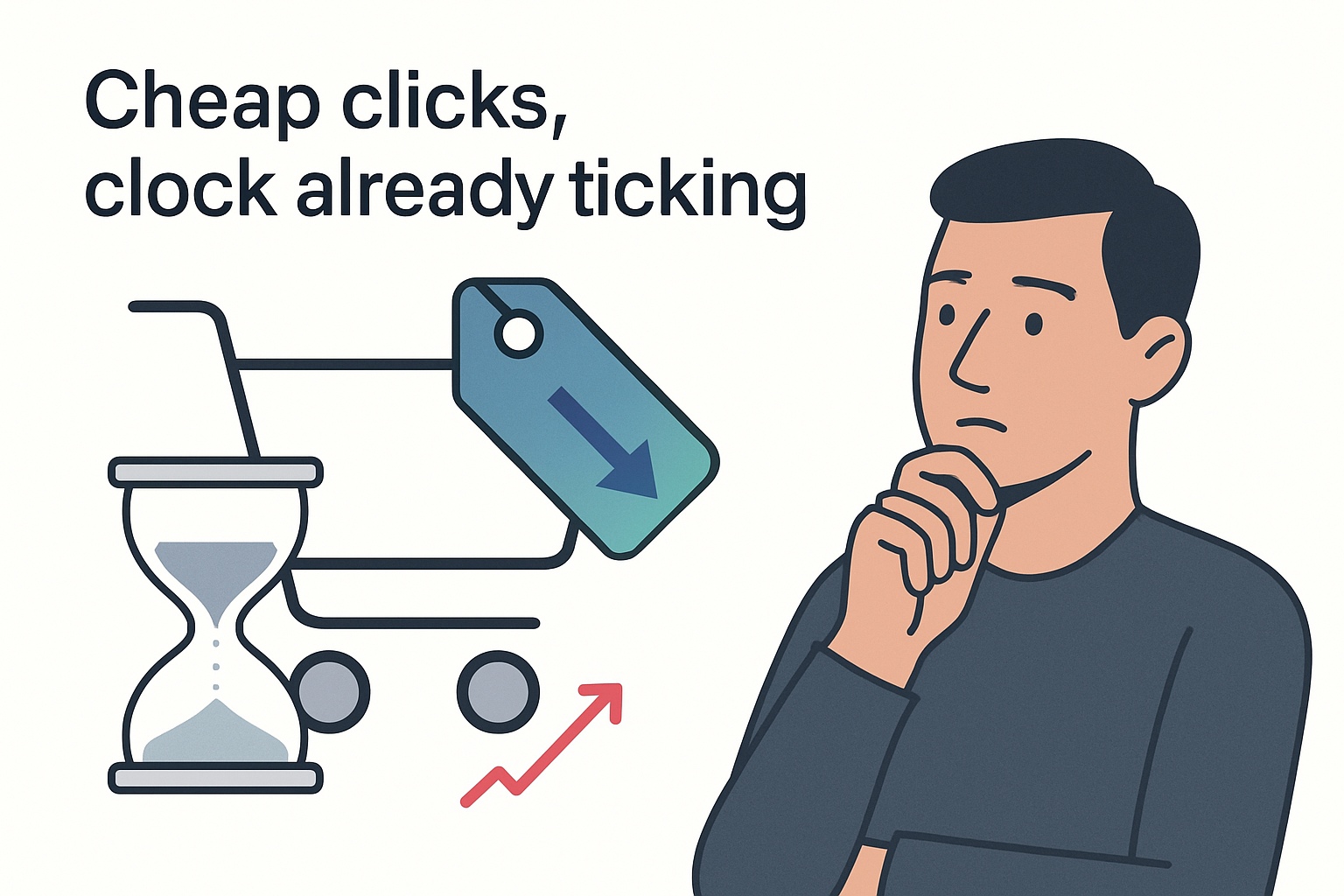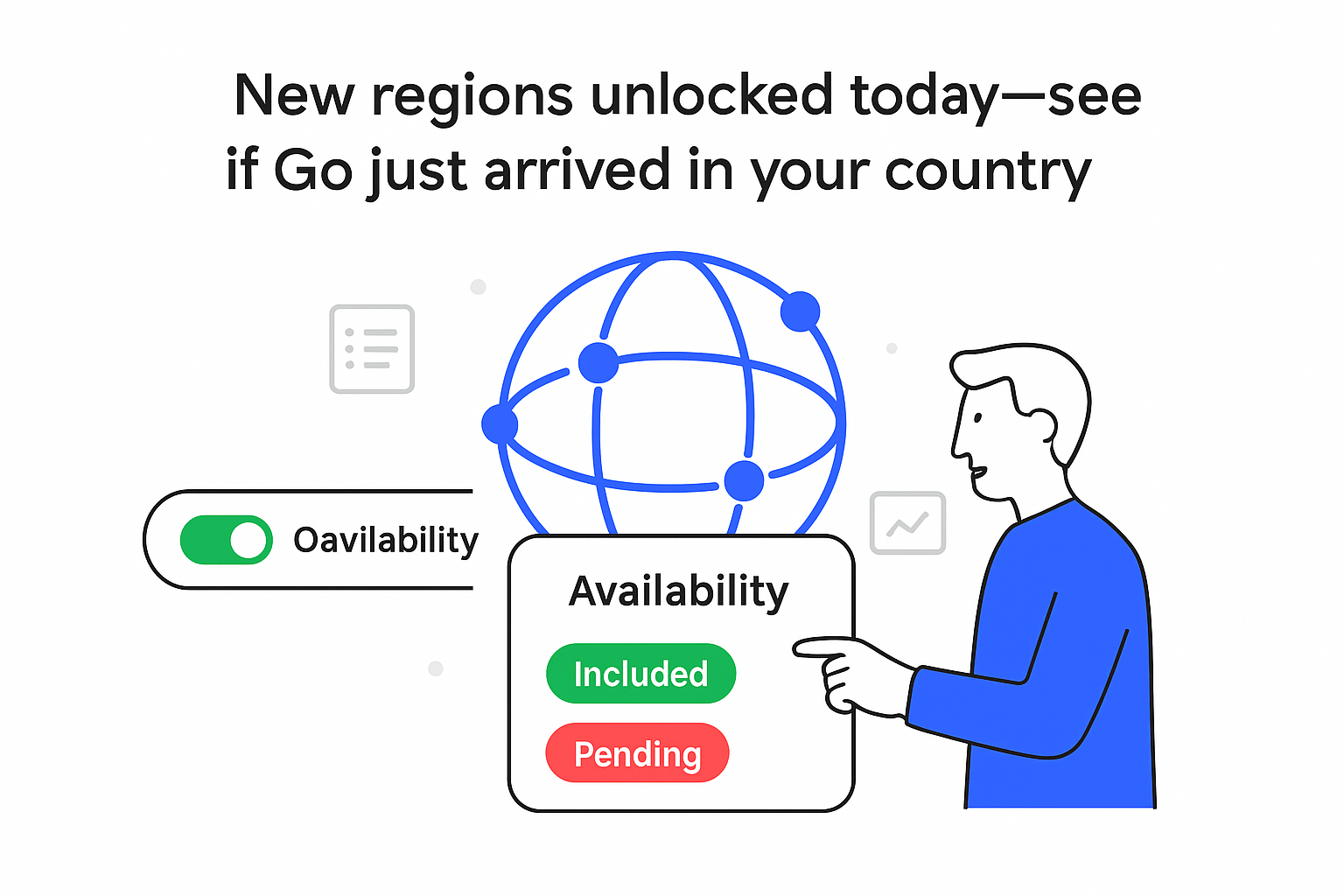Amazon’s abrupt retreat from Google Shopping auctions has removed the platform’s largest bidder and reset price dynamics that had been steady for nearly a decade. The focus for performance marketers now shifts to how long cost-per-clicks (CPCs) will stay depressed and which tactics can seize the short-term surplus.
Amazon exits Google Shopping ads
Between 22 and 24 July 2025 Amazon stopped submitting Product Listing Ads across 20 Google country domains, pulling an estimated 2–3 billion daily impressions. The decision, first highlighted in Amazon’s sudden retreat, saw Amazon’s auction share fall from roughly 30 percent to near zero within 48 hours, according to SMEC tracking.
The cliff was confirmed by practitioners such as Josh Duggan and David Kyle, who reported Amazon vanishing from both paid and free listings.
Key takeaways for marketers
- Near-term CPC compression: Early data from 47 retail accounts shows average Shopping CPC down 7–12 percent versus the previous four-week mean.
- Impression-share lift: Brands that historically overlapped with Amazon report gains of 5–15 percentage points, especially on branded SKU terms.
- Budget re-allocation window: Until other large aggregators scale bids, smaller retailers can test broader query coverage without proportional cost risk.
- Seasonal watch-points: If the pause is tactical, a staggered re-entry near Prime Day or Q4 is likely; a structural exit would keep auctions softer through the holidays.
Immediate effects on CPC and impression share
Google Shopping runs on a second-price-style auction where the clearing price is set by the next-highest bid. With Amazon gone, that floor has dropped:
- Median CPC −9.4 percent (US), −11.1 percent (DE), −6.3 percent (UK) versus the trailing 30-day average (300 k U.S. clicks, 25–26 July).
- Click-through rate up 4–6 percentage points when Amazon previously held position 1.
The drop is uneven. High-margin electronics registered only a 2 percent CPC decline, suggesting other big resellers filled the gap quickly.
Auction mechanics and possible motives
Industry observers including Duane Brown, William Julian-Vicary and Brandon Yann point to three likely drivers:
- Cost control: Trimming an annual Shopping budget modeled at 750–900 million USD improves Retail Media margins during heavy AI and fulfillment investment.
- Channel realignment: Amazon Marketing Cloud data shows greater incrementality from upper-funnel video and CTV than from off-marketplace PLA traffic.
- Experimentation: A pandemic-era pullback in 2020 cut spend by 60 percent for six weeks, then returned at higher efficiency; 2025 could be the same test at full scale.
Flow: exit decision – lower bids – reduced ad coverage – competitor CPCs fall – volume shifts to Amazon-hosted search results and rival retailers.
Operational impact for marketers
- Paid search: Expect 5–15 percent budget headroom until auctions equilibrate. Re-model ROAS targets weekly.
- Merchant feeds: Products that once lost to Amazon now surface. Tighten price-matching and push stock updates hourly.
- Brand protection: Branded keywords cost less right now; lock in higher impression share before new arbitrageurs enter.
- Advertising ops: Performance Max will reinvest CPC savings automatically. Apply campaign-level cost caps so Google does not absorb the surplus.
Scenarios and monitoring plan
- Base (60 percent): Amazon stays out through September and returns for Black Friday with moderated bids.
- Upside (30 percent): Absence extends through Q1 2026; average Shopping CPC remains 5–8 percent below the 2024 trendline.
- Downside (10 percent): Rapid re-entry within four weeks reverses CPC drops and erases gains.
Track weekly: impression share versus July baseline, CPC deltas, Amazon domain visibility in free listings, and Merchant Center diagnostics for new competitors.
Data gaps and uncertainties
- Google has not disclosed revenue impact; external CPC figures rely on limited account samples.
- Amazon’s internal attribution model is unknown. If cross-channel incrementality drove the exit a permanent change is more plausible.
- Other marketplace aggregators such as Temu and Walmart may fill the bid landscape. Their speed will dictate how long CPC softness lasts.
- Market-wide implications raised by Robin Yarwood remain to be seen.
Sources
- Search Engine Land, 25 Jul 2025, “Amazon pulls out of Google Shopping ads”.
- SMEC auction tracker, 26 Jul 2025, dataset shared on LinkedIn.
- Internal agency panel (seven US/EU agencies), anonymised CPC logs, July 2025.







.svg)